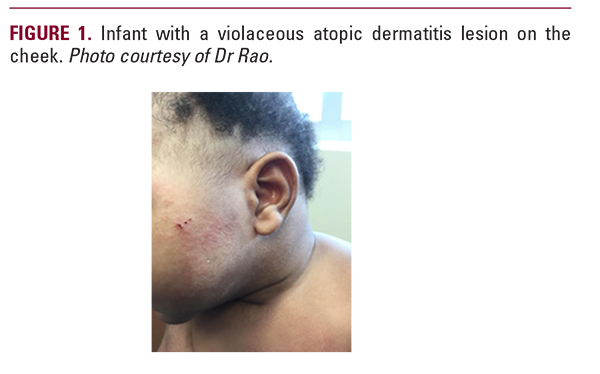
offer even more opportunity to tailor their approach to skincare for these patients.15 A study on SOC newborns in the United Kingdom (UK) evaluated TEWL, pH, stratum corneum (SC) hydration, melanin, dryness, and erythema at birth and week 4; while parents/caretakers completed a qualitative diary on skin care practices and skin observations.67 SC hydration and melanin increased in the first 4 weeks of life, and SC pH and erythema decreased significantly. Parents reported being frequently insecure, and noted all minor skin changes in the infants' skin prompted product use. The study observed that skin integrity and skin care practices of infants from SOC groups in the UK differed significantly from White infants. The SOC study group used more skincare products than their White counterparts, particularly oils (used on 62.4% of SOC infants, n=83). This study, and more deliberative studies with SOC newborns, infants, and children that investigate racial/ethnic and cultural differences, may be useful for infant skin care guidelines to provide culturally sensitive advice relevant to the real-world context of newborns and infant care.
Statement 2: Genetic and environmental factors influence the stratum corneum barrier properties and function. Biophysical studies are needed to help patients make informed skincare choices.

Statement 2: Genetic and environmental factors influence the stratum corneum barrier properties and function. Biophysical studies are needed to help patients make informed skincare choices.

Increasingly studies on SOC groups show variability in the skin's physiological properties, which influences the SC condition and sensitivity to exogenous agents.18 Investigations using biophysical measurements to report racial/ethnic differences in skin properties may include TEWL, water content, SC pH, ceramide level, and skin reactivity.18 Studies reporting TEWL differences between adult SOC groups have yielded conflicting results. Studies on adults showed differences in SC characteristics among SOC groups. These included a higher TEWL and ceramide content in Asian skin and lower water and ceramide content in Black skin.18 Additionally, the study showed a higher skin reactivity in Asian compared with Black and White skin.18 Additional biophysical assessments to better determine racial/ethnic variations in skin properties would assist in more tailored skincare product selection.10,18
Statement 3: Literature suggests racial/ethnic variations in ceramide content, stratum corneum structure, and filaggrin mutations.
Statement 3: Literature suggests racial/ethnic variations in ceramide content, stratum corneum structure, and filaggrin mutations.
Although the role of race and ethnicity in the pathophysiology of AD remains unclear, variations in the epidemiology, clinical presentation, disease course, and impact on quality of life have been reported in different racial/ethnic populations.36-42 An extensive population-based survey of 102,353 families representing all 50 US states (National Survey of Children's Health [NSCH]) showed that African American children are 1.7 times more likely to have AD than their White counterparts even when adjusting for household income, parental education level, metropolitan vs rural environment, and health insurance coverage status.36







